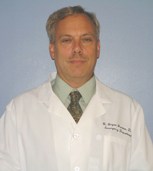While the prevalence of strokes in Connecticut has essentially remained the same in recent years, progress in slowing the number of deaths from stroke has declined in the state, a development the Centers for Disease Control and Prevention (CDC) calls “disturbing.”
The spike reverses a national decades-long trend that brought stroke death rates down. From 1999 to 2014, deaths from strokes were on the decline in the state and nationally. But a recent CDC report found that Connecticut was among 39 states in which the decline in stroke deaths has slowed or the number of stroke deaths has started to increase.
From 2012 to 2015, the number of stroke deaths in Connecticut increased 9.5 percent, from 1,263 to 1,384. Stroke deaths were highest in the northeast and northwest regions of the state, CDC data show.
Strokes are the fifth leading cause of death in Connecticut, with heart disease and strokes accounting for about 27 percent of deaths. The number of deaths from strokes increases with age, with almost 90 percent of stroke deaths occurring among people 65 years and older.
 Strokes disproportionately affect African Americans in the state, a Department of Public Health report notes. And, while stroke incidents do not vary significantly among men and women, a majority, or 61 percent, of stroke deaths in the state from 2011 to 2015 were among women, who live longer than men.
Strokes disproportionately affect African Americans in the state, a Department of Public Health report notes. And, while stroke incidents do not vary significantly among men and women, a majority, or 61 percent, of stroke deaths in the state from 2011 to 2015 were among women, who live longer than men.
State medical experts cite varied reasons for the recent increase in stroke deaths although they cautioned that the uptick may just be a statistical blip that needs to be reviewed over time.
“Sometimes it takes a few years to see if it is a trend,” said Dr. Mehul Dalal, chronic disease director for the state Department of Health (DPH). “But the level of concern is there for this data.”
Dalal said health professionals should review three major areas if the upward trend continues: lifestyle and behavior, risk factors and systems of care.
The CDC report said the reasons for the reversal in the stroke death rates is unclear, but a key contributing factor could be the increase in obesity, which is a major cause of hypertension and the single most modifiable risk factor for stroke. The report also pointed to diabetes, unhealthy diets, physical inactivity and uncontrolled high blood pressure.
Risk Factors And Lifestyles
Dalal said the stroke death data the CDC found is consistent with increasing risk factors among residents in the state.“Both obesity and diabetes have increased dramatically over the past decades,’’ Dalal said. “Sometimes it takes a few years for trends to manifest themselves.”
While obesity rates are leveling off, an estimated 25 percent of adults in the state are obese, according to a September 2017 DPH report.
The report noted that adults with lower levels of education and household income are more likely to have high blood pressure, high cholesterol and diabetes. They are also more likely to be obese, inactive and not have had their cholesterol levels tested as compared to those with higher incomes and education levels.
These risk factors are most prevalent among residents in regions of the state with the highest stroke death rates, Dalal said. The regions with the highest levels also are in more rural locations, which could increase the distance stroke victims may have to travel for immediate and comprehensive stroke care.
One important way to consistently decrease the number of stroke deaths is early diagnosis and treatment of high blood pressure. Only half of the 75 million U.S. adults with hypertension have their blood pressure under control.
“If I were to pick one thing that could really advance this issue in terms of reducing strokes, it would be control of high blood pressure,’’ Dalal said. “There is plenty of room for improvement. There are a lot of community members who are not even aware their blood pressure is high. This is a reminder to continue to work on those efforts of reaching out into the community.”
Know The Signs
Dr. Michael Werdmann, co-director of Bridgeport Hospital’s Stroke Center, said continued education efforts to alert people to the signs of stroke is a key component to reducing deaths. More than 80 percent of stroke deaths are preventable but there is more work to be done.

Dr. Michael Werdmann
“Even though we’ve done a lot of education, people are still not aware of the signs such as weakness in the face or speech issues,’’ he said. “Just like a heart attack, a stroke is very time sensitive. Once a few hours have gone by, the damage is done. We intervene to stop the continuing damage. There’s no medication that goes back and cures and recovers brain cells that have died. All we can do is stop the progression and to do that we have to get to people early.”
Signs of stroke can include drooping facial expressions, slurred speech and loss of control over arms.
“I’d much rather see 100 people who have come in because they are worried they had symptoms of stroke and I can tell them they didn’t than the one who shows up late and we can’t do anything,’’ Werdmann said.
Advanced Directives
One unique factor in the increase in stroke deaths may be related to the increasing number of patients with advanced directives and information about end-of-life choices, said Dr. Amre Nouh, director of the Comprehensive Stroke Center at Hartford Hospital.
Nouh, pointing to a recent study in the medical journal Stroke, said mortality may be going up not because of lack of care issues but because of the choices patients and families are making when a loved one has a catastrophic stroke.
“It’s a slow shift but at least in the past few years we are seeing more and more discussion and knowledge of end-of-life care and patient directives,” he said. “You can drive down mortality by keeping folks alive by artificial means but culturally, even in the medical world, there has been more focus on being more mindful of patient’s advanced directives and family wishes rather than just focusing on keeping patients alive and discharging them from hospitals.”
Early Intervention
Even if the increase in deaths is a statistical anomaly, medical experts say it should not be ignored.

Yale School of Medicine Photo.
Dr. Jennifer Dearborn-Tomazos
Dr. Jennifer Dearborn-Tomazos, assistant professor of neurology at the Yale School of Medicine, said the CDC study calls attention to important issues about stroke detection. The CDC and Connecticut data note that younger adults are experiencing higher risk factors along with an increased incident of strokes.
The CDC reported that recent studies show that younger adults have experienced significant increases in stroke hospitalization and associated stroke risk factors.
“These changes in modifiable stroke risk factors might present new challenges for stroke prevention and for maintaining a sustained decline in stroke mortality in the United States,’’ the CDC study noted.
In Connecticut, about 12 percent of state high school students are obese, and 14 percent had not participated in 60 minutes of physical activity at least one day of the week.
“The message for all clinicians,’’ Dearborn-Tomazos said, “is stroke detection starts young.”